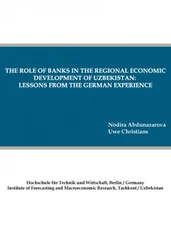The problems of economic growth became one of the central problems in the theories originated in Keynesian economics and the neo-classical teaching. Giving this significance to the problem of growth reflects, in our opinion, understanding development as an increase in some feature of an object.
Indeed, economic growth is fixed according to the dynamics of one parameter, an increase in which is interpreted as a positive appearance and a decrease is interpreted as negative. Consequently, the problem of the assessment of the mixed dynamics of several parameters, the problem reflecting, though not adequately, a simultaneous action of opposite tendencies in the economy falls away.
Negative consequences – for example, pollution of the environment – and also a possibility of keeping and even worsening social problems (poverty, inequality, etc.) are marked in researches of economic growth. But still these circumstances act as external ones with respect to growth.
Economic growth characterizes the dynamics of a product. It is true that the GDP includes the money assessment of not only produced goods but services, but as it is the money assessment so in its limits differences in results of item-transforming activities and activities connected immediately to development of a human disappear. To measure in relation, the commensurable needs to be brought to one quality, however, in this case it is reached by means of economically heterogeneous results.
Certainly, progress of the economic theory could not stop at the stage when development of the economy as the sphere of the social life was brought to the dynamics of a social product. Usage of the notion “economic development” became a reflection of the transition to a more substantial theory.
According to its appearance – from the theory of economic growth – economic development is viewed in a close connection to such growth. The mentioned notions are, by the essence, identified at times. For example, H.-J. Chung determines economic development as “a process of economic growth that is based on the increase in economy’s productive capabilities: its capabilities to organize – and, more importantly, transform – its production activities” [1]. It is obvious that it is written about realization of the potential of economic growth, so the usage of a new term becomes unnecessary, the problem of going outside the limits of understanding development as a quantitative change remains unsettled.
In the modern science the tendency to overcoming this limitation is traced. According to Marcelo M. Giugale “economic development is a process by means of which the society creates material wealth and uses it to increase welfare of its members” [2]. Thus, the mentioned notion is shown as including economic growth but it is not brought to it only. It means an increase in public welfare too,
Welfare may be determined as an availability of prerequisites for development of a human.
Consumer items are most often viewed as prerequisites for development of a person. Actually, without satisfaction of material needs of this kind a human’s life is not possible, so appropriation of consumer items is a necessary element of welfare.
At the same time, a person asserts himself as a human not in personal consumption connected to his biological needs but, first of all, in labour as specifically human’s activities. A possibility to work is a prerequisite of a human’s development and, as being realized, forms an element of his welfare.
Time in which a person’s development becomes an end in itself – free time – is needed to realize many-sided person’s abilities. Possession of such time is included in welfare too.
Consequently, welfare is formed by means of appropriation of a complex of conditions for a person’s development what must be taken into consideration when studying economic development. The latter is rightly characterized as “a process where increases in real per capita output and incomes are accompanied by improvements in standards of living of the population and reductions in poverty, increased access to goods and services that satisfy basic needs (including food, shelter, health care, education, sanitation and others), increasing employment opportunities and reduction of unemployment, and reductions of serious inequalities in incomes and wealth” [3].
Each person is individual. It is often treated as if social welfare cannot be literally understood, welfare can be only individual. Then economic development is rightly assessed from the individual point of view only, what, for example, F. Nixson writes about: “…I can only assert it – my definition of development is merely different from, not better than, yours” [4].
Meanwhile, the social essence of a human means that his specifically human needs (in labour, artistic creativity, etc.) are socially conditioned and satisfaction of biological needs are adjusted with social norms. In this quality prerequisites for human development are not purely individual, incommensurable with such prerequisites for others. Consequently, “social welfare” is a rightful characteristic of joint welfare of all members of the society what, in its turn, makes consideration of economic development, as an objective appearance not depending on subjective assessments of individuals, well-grounded.
Moreover, with respect to social and individual welfare the first one is a priority. In what volume material needs of individuals can be satisfied depends, in the end, on the level of social labour productivity, and at its present level it depends on the quantity of labour spent in the social scale. The quantity of the working time fund sets limits for time that the society can spend on fulfilment of nonproductive social activities. That is why the dynamics of individual welfare can be explained according to the dynamics of social welfare, and not vice versa.
At the same time, social welfare does not exist out of welfare of members of the society, so the first cannot be fully understood without taking into account the other.
Belonging to the society serves as the objective ground for everyone’s participation in appropriation of conditions for self-development, but the specificity of life circumstances excludes a full coincidence of conditions for everyone’s development. There is a contradiction making a source of economic development.
The progressive tendency in it is connected to approaching to social economic equality of all members of the society in appropriation of conditions of their development, the negative one is connected to intensification of social economic inequality with respect to such conditions.
Then, economic growth does not indicate economic development if it is not combined with intensification of social economic inequality. For example, F. Nixson considers to be well-grounded the idea that “if economic growth did not lead to a reduction in poverty, inequality and unemployment, then economic development could not be said to be occurring” [5]. But continuous economic growth without economic development meets problems.
Approaching to social economic equality is possible by means of redistribution of produced products, changing in their structure in favor of increasing in production of elements of the social infrastructure without increasing the social product. That is why E. Tragakes truthfully assumes a situation of economic development without economic growth [6].
All of it proves that economic development is a process of a higher level than economic growth, and it demands understanding the contradiction resolution of which forms such development.
The general contradiction of economic development gets a special appearance in different economic epochs.
In class societies social welfare increases by means of priority appropriation of conditions for development by ruling classes to other classes’ detriment. This situation corresponds to progress of productive forces in conditions of predominance of manual work.
Читать дальше












